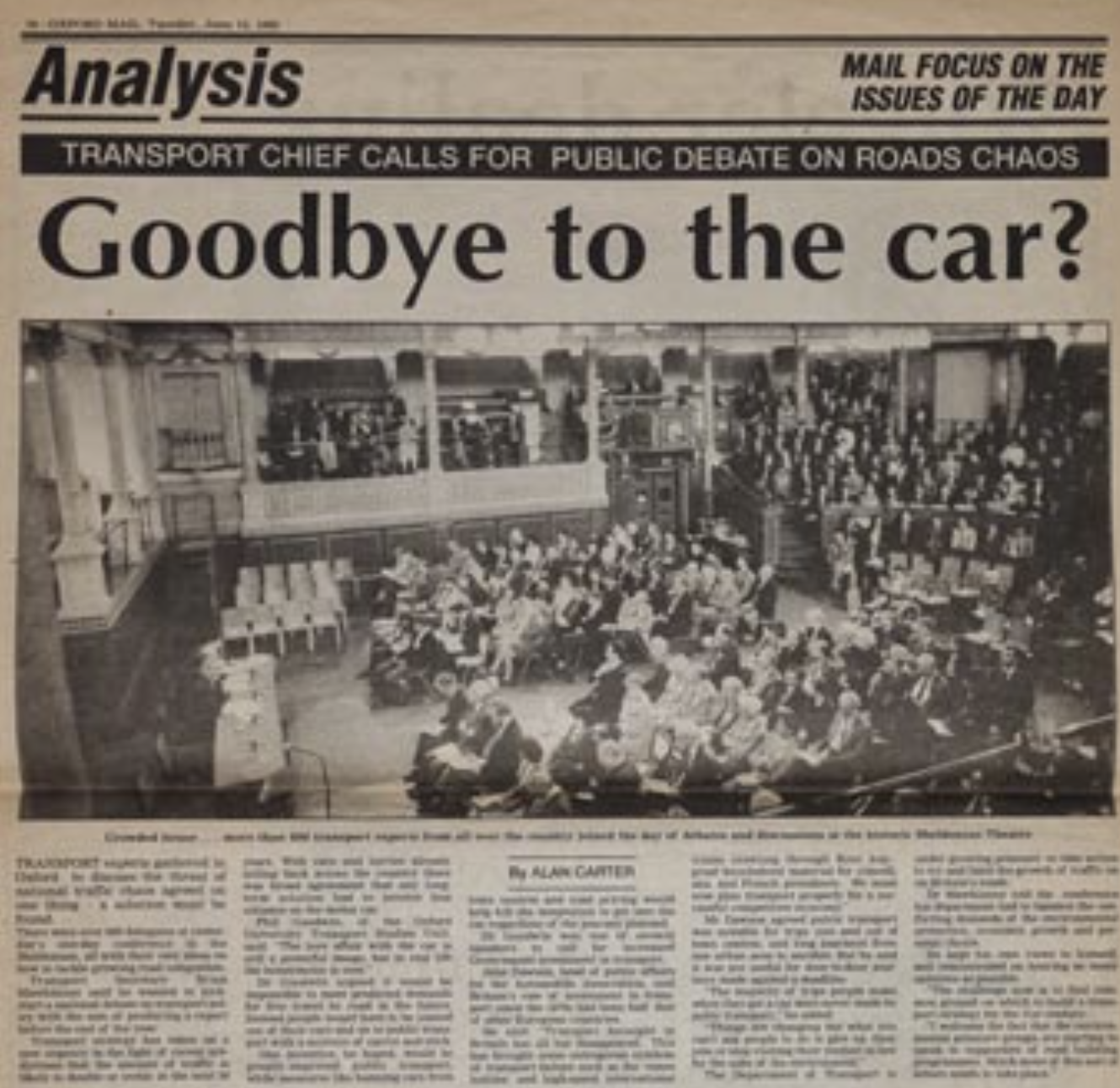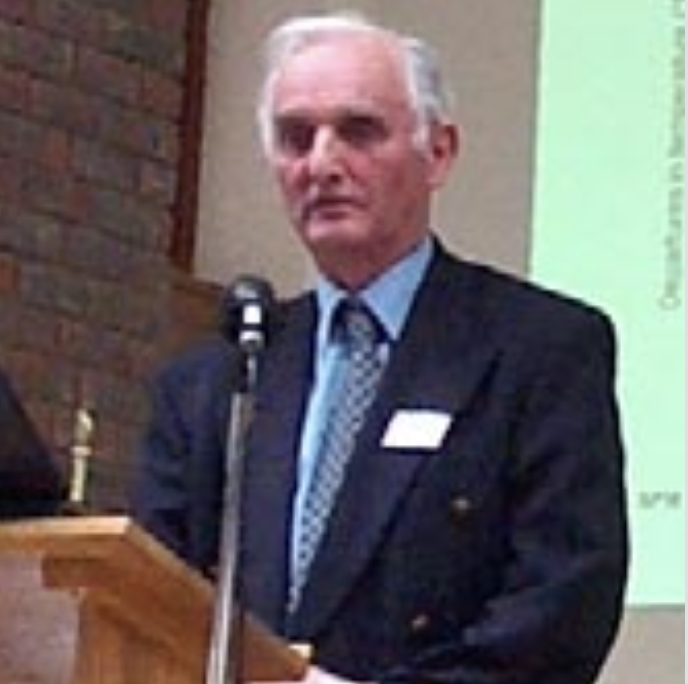TAPAS.network | 2 December 2021 | Reviews and Reflections | Arman Farahmand-Razavi
This might turn out to be another significant moment

offers his personal reflections on a forum that embraced the big issues of our time, and how it has reminded him of past gatherings of the sector’s leading thinkers
REFLECTING on the 5th Annual Local Transport Summit in Brentford last month, I felt privileged to be part of a discussion that could come to be seen as a significant moment in the history of professional transport planning in the UK. The significance may not have been the event itself, or any of the individual speakers and their presentations. But after the traumatic experience of the past 18 months it provided a special opportunity to get together physically and to take stock of what had changed in the world since the start of the Covid-19 pandemic.
And the world certainly seems to be a different place, needing new approaches to addressing the very real challenges that humanity faces.
Aside from the consequences of the pandemic, which are still working through, the Summit came just after COP26. I wasn’t present at COP26, but there were plenty of people at the Summit who were also in Glasgow, and who shared their observations with us, and the implications for local transport.
The message from COP26: Inaction is not an option
The message from Greg Marsden, professor of transport governance at ITS Leeds, Richard Walker, transport planning and policy adviser at ITS Leeds / DfT, Martina Juvara, director of Urban Silence, and Keith Mitchell, director of Transport and Place at Stantec was clear and unambiguous; inaction is not an option.
We were reminded that addressing the problem is not all about ‘us’, both geographically and professionally. We need to view this as a global and multi-disciplinary challenge; nor is either all about politics or technology, but how we live as a society, and what we expect to individually be able to do.
To succeed in tackling climate change, local action in the UK must be joined up with national policy, and empowered to make a real contribution – quickly. We must establish data and evidence to improve decision making, and we need local place-based initiatives and programmes that encourage community participation and responsibility to make changes in what we do, and the impacts it has. All this implicitly requires cross sector collaboration.
A new era of Local Transport Plans: A more proactive DfT
The Summit was also an opportunity to take stock of the role of the public sector and recent more interventionist approach to transport. Stephen Fidler, who leads on local transport at the DfT, brought news of the revival of Local Transport Plans and their framework for supporting integrated funding of transport in local areas. We should also look forward to future local transport funding being conditional on quantifiable carbon reductions. There was news also of innovation for rural transport; the DfT expects Demand Responsive Transport to play a bigger role in rural transport in the future.
There was a hint too, that perhaps the Law Commission review a few years ago into Taxi and Private Hire Services may also lead to new legislation in this area, and of greater clarity being provided on the status of new kinds of micro-mobility.
The Summit also discussed the more realistic view of technology; it was refreshing to be in a forum where the impending promise of new technology did not drive everything. Indeed, Thomas Ableman, director of Innovation at TfL and Peter Harrop, founder of expert advisors IDTechEx poured cold water on some of the outlandish products out there, looking for speculative investor money to deliver flying cars, passenger carrying helicopter drones and hydrogen powered vehicles, but they also shared their insight on some of the innovative yet more realistic possibilities for advanced mobility solutions.
Though both thought that previous assumptions of the timing of the roll-out of autonomous vehicles were significantly slipping.
For those of us gathering in Brentford, supported by hosts from the London Borough of Hounslow, these are exciting times to be working in the transport sector; the landscape of transport policy has changed yet again and the Summit was an occasion to discuss and chart a new way through this new landscape.
One of the phrases we heard from several speakers at the Summit — practitioners working in various dimensions of the domain — was “I am not a transport planner, I am (something else)…”. This was then followed by a professional descriptor that the speaker was more at ease with in their day-to-day professional activity, though comfortably recognising the contribution they could make to the local transport discussion.
Deborah Saunt, an architect, showed us digital tools to improve our analysis of transport and placemaking and the consequent design of suitably effective measures; Stefanie O’Gorman, an economist, discussed 20 minute neighbourhoods in the Scottish urban and rural context; Martina Juvara, a non-transport planner pointed to the need to change fundamental planning practice; Alan Wood, a bailiff, showed us how £1bn annually that could be spent on local transport is evading collection by persistent and nuisance vehicles, and what can be done about it; Pete Dyson and Rory Sutherland, behavioural science practitioners, launched their book Transport for Humans about how ordinary people make transport decisions and not always how the experts expect them to.
Culture wars: new landscape that challenges policy making
The Summit discussion on Culture Wars was also a reminder of how the landscape of public engagement has changed and how challenging professional policy-shaping input and public and political engagement and delivery has become. People were not simply waiting for the transport experts to tell them what was good for them whilst wagging their fingers at them, as John Dales, Director of Urban Movement, put it.
This was a sign, perhaps, that the context for transport has also significantly changed and how we have to embrace this change and re-examine our propositions and our approaches, and the skill-set (and mind set) available to us.
We need a moment to reflect and particularly ask ourselves if we have the right team members and perspectives for dealing with all the many dimensions this new landscape is opening up.
On a macro level we have to recognise what is required to deal with climate change issues and deliver sustainable transport and mobility solutions is no longer just a transport issue, but is integrated — as it has always been integrated — with land use, economics, urban design and a multitude of other things, including energy, finance, other business interests, public opinion and political will.
At a local level, the challenge is relating transport patterns to other daily decisions and activities, and the trade-offs everyone faces in their lives. All this means that we need to signal a willingness to have a conversation across professional disciplines and work together to make it all add up. Perhaps acknowledging that the transport profession — let me re-phrase that: the old style transport profession — cannot have all the answers.
The old order changeth: is history repeating itself?
The more we talk to people, the more we open the discussion and can have cross sector thinking. As we heard from Stuart Blackadder, from TfGM, exploring and co-ordinating effective cross-sector links between the Health and Transport Sectors in Greater Manchester yielding great outcomes for both.
This Summit could come to be seen as a significant moment in the history of professional transport planning in the UK. I recall two other times during my professional career that later came to be seen as similarly significant moments. These happened in the consecutive years of 1995 and 1996, which on reflection was a momentous period for transport planning professionals in the UK.
Back in 1995/96 — now 25 years ago — there was a heavy discussion about the direction for transport policy in the UK. The Royal Commission on Environmental Pollution (RCEP), led by Sir John Houghton, had just published its report on Transport and the Environment which signalled the need for a review of policy based on cars and road building by vocalising very effectively and with great clarity and evidence (and arguably for the first time at national Government level) that a fundamental rethink on car and road-based policies was needed to control their adverse impacts.
The RCEP report was one of the prompts that led Dr Brian Mawhinney, in his capacity as the Transport Secretary, to start what he called ‘the Great Transport Debate’ in order to seek common grounds in balancing the demands of the environment, the economy and personal mobility.
One of its first manifestations was a debate at the Sheldonian Theatre in Oxford in May 1995. Mawhinney chaired the session, in which Dr Phil Goodwin, then the head of the Transport Studies Unit at Oxford University, and John Dawson, then Group Director of the Automobile Association, debated the future direction for transport policy.
It was obvious to many of those present at the debate at the Sheldonian Theatre, and steeped in the logic of transport planning, that sustaining policies based on unfettered use of the private motor car was not an option.
This reality seemed to be soon embraced by the Government too. The significance of that event at the Sheldonian perhaps was not immediately realised. But it subsequently led to the publication of the Green Paper, Transport: The Way Forward, which then led to the Integrated Transport White Paper, ‘A New Deal for Transport: Better for Everyone’ published in July 1998 (along with its sister documents, ‘Travel Choices for Scotland’ and ‘Transporting Wales into the Future’) and ultimately to where we are today.
Challenge to the establishment that gave planners their own voice
This is an often-overlooked moment, which I feel is worth a proper acknowledgement, particularly as I was pleased to sit myself, quite innocently, right next to Sir John Houghton in the Sheldonian theatre debate (see panels below).
Significantly, back then, there wasn’t really an identifiable Transport Planning Establishment quite like the one we have today. The institutional professional bodies at the time each had a claim to a section of the territory, and each felt they were rightfully positioned to discharge the duty of representing the interests of society at large through their membership.
A group of disruptive and discontented transport planners saw this as too institutional — both figuratively and literally — and had therefore begun to request the establishment of their own professional body.
A second ultimately highly significant event took place a year after the Sheldonian debate, being the 3rd Transport Practitioners Forum, which took place in London in July 1996. This was the culmination of a wide ranging set of deliberations across the transport planning community, where they met yet again to discuss how they could move forward to be better represented professionally.
The four leading learned institutions were also represented at that meeting — being the Institution of Civil Engineers, The Royal Town Planning Institute, the Chartered Institute of Transport, and the Institution of Highways and Transportation.
The debate was heated and passionate, but frustrated by the old guard defending the traditional professional boundaries. That Forum concluded it must go on and develop a Transport Planning Society, which eventually, with different degrees of buy-in, had those four existing institutions as co-sponsors of it.
What we are discussing now is arguably a new version of what happened 25 years ago.
New radicals: rising up to replace the old guard
When change is required, some restless and frustrated (and they'd like to think visionary) people try and turn everything upside down.
When they reach critical mass the established norms are swept away and a new establishment of some kind emerges, to find itself in spaces previously occupied by an old guard.
Though not always entirely ready to set out a clear new agenda and generally endorsed implementation plan.
For me, the Summit was a reminder that those who were once the new radicals, should be very careful not to now become the old guard, excluding the new tranche of troublesome disrupters whose energies are vital to the new moment in a variety of ways. Some cast the message in the phrase ‘Beware of Group Think’ or of ‘The Echo Chamber’.
In this regard it was very insightful of one of the Summit attendees to ask the assembled professional audience to indicate who amongst them did not believe that a scheme of road user charging should now be introduced. Not a single hand was raised.
Was that a mirror of our wider society, he wondered — or perhaps an indication of a worrying disconnect.
Taking the train home back from Brentford, I could not stop thinking of TS Eliot’s Journey of the Magi and the lines:
We returned to our places, these Kingdoms,
But no longer at ease here, in the old dispensation,
With an alien people clutching their gods.
So let us ask now: ‘Who are our Gods?’ Are they still deserving of our Worship?
Arman Farahmand-Razavi is a transport and planning advisor and a business strategy professional. He is the joint editor of the TAPAS.Network and chairs The Friends of LTT working group since 2021.
This article was first published in LTT magazine, LTT835, 2 December 2021.
The articles below also provide context on his reflections on the Local Transport Summit of 2021.
Major 1995 debate warned that growth of transport was unsustainable
A ground-breaking debate attended by several hundred transport specialists marked a turning point in UK transport policy in 1995 at the historic Sheldonian Theatre in Oxford.
The debate picked up issues raised in the report by the Royal Commission on Environmental Pollution under the chairmanship of Sir John Houghton, presented to Parliament in October 1994.
The report, Transport and the Environment, was a culmination of two years of work receiving evidence from a wide range of people and organisations. Its assertion was that the long-term impact of the projected rate of growth of transport, particular road transport, was unsustainable.

Oxford Mail, 13 June 1995, reporting the meeting at the Sheldonian
There were over one hundred recommendations in the report including adoption of an integrated approach to planning, charging for environmental pollution, switching investment from road building to public transport and supporting improved facilities and safety for walking and cycling.
The impact of the report was far reaching. The Conservative government of John Major set up an inter-depart- mental task force to respond to the re- port and the then transport secretary Brian Mawhinney who started what was called the Great Transport Debate that began the path to the Integrated Trans- port White Paper, introduced by the newly elected Tony Blair’s New Labour administration in 1998. The Sheldonian event formed a key part of that process. The report attracted considerable attention and was published as a book by Oxford University Press in 1995.
Houghton – a climate science pioneer

Sir John Houghton CBE was an atmospheric physicist, a Member of the Royal Commission on Environmental Pollution between 1991-98 and its Chairman from 1992 to 1998.
The Royal Commission published its 18th Report, Transport and the Environment in October 1994. The same year, Houghton published his seminal work, Global Warming, the Complete Briefing, now on its fifth edition and regarded as the definitive text on the subject.
Houghton was one of the key figures in the creation of the Intergovernmental Panel on Climate Change (IPCC) in 1988, and served as Chair and Co- Chair of Working Group I, which assesses the physical science basis of climate change, for the IPCC’s first three assessment reports from 1988 to 2002.
His work was a major factor in the award of the Nobel Peace Prize to the IPCC in 2007, shared in two equal parts with the former US Vice-President Al Gore.
Sir John Houghton died of complications from Covid-19 on 15 April 2020 aged 88.
You are currently viewing this page as TAPAS Taster user.
To read and make comments on this article you need to register for free as TAPAS Select user and log in.

Log in